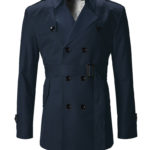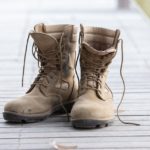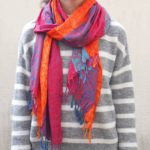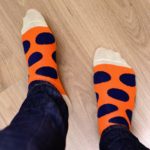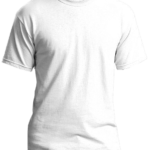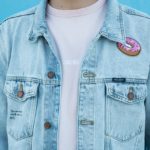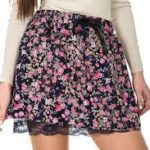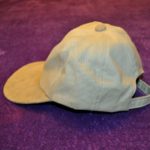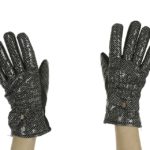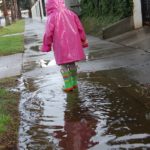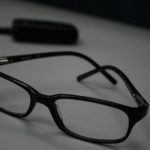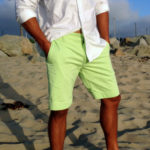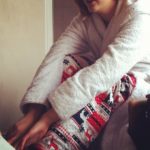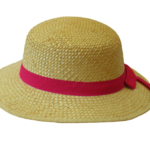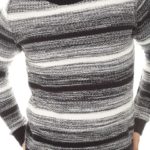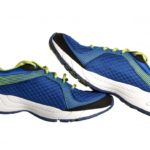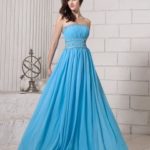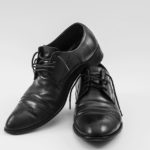7.2: Vocabulario- La ropa
- Page ID
- 171464
\( \newcommand{\vecs}[1]{\overset { \scriptstyle \rightharpoonup} {\mathbf{#1}} } \)
\( \newcommand{\vecd}[1]{\overset{-\!-\!\rightharpoonup}{\vphantom{a}\smash {#1}}} \)
\( \newcommand{\dsum}{\displaystyle\sum\limits} \)
\( \newcommand{\dint}{\displaystyle\int\limits} \)
\( \newcommand{\dlim}{\displaystyle\lim\limits} \)
\( \newcommand{\id}{\mathrm{id}}\) \( \newcommand{\Span}{\mathrm{span}}\)
( \newcommand{\kernel}{\mathrm{null}\,}\) \( \newcommand{\range}{\mathrm{range}\,}\)
\( \newcommand{\RealPart}{\mathrm{Re}}\) \( \newcommand{\ImaginaryPart}{\mathrm{Im}}\)
\( \newcommand{\Argument}{\mathrm{Arg}}\) \( \newcommand{\norm}[1]{\| #1 \|}\)
\( \newcommand{\inner}[2]{\langle #1, #2 \rangle}\)
\( \newcommand{\Span}{\mathrm{span}}\)
\( \newcommand{\id}{\mathrm{id}}\)
\( \newcommand{\Span}{\mathrm{span}}\)
\( \newcommand{\kernel}{\mathrm{null}\,}\)
\( \newcommand{\range}{\mathrm{range}\,}\)
\( \newcommand{\RealPart}{\mathrm{Re}}\)
\( \newcommand{\ImaginaryPart}{\mathrm{Im}}\)
\( \newcommand{\Argument}{\mathrm{Arg}}\)
\( \newcommand{\norm}[1]{\| #1 \|}\)
\( \newcommand{\inner}[2]{\langle #1, #2 \rangle}\)
\( \newcommand{\Span}{\mathrm{span}}\) \( \newcommand{\AA}{\unicode[.8,0]{x212B}}\)
\( \newcommand{\vectorA}[1]{\vec{#1}} % arrow\)
\( \newcommand{\vectorAt}[1]{\vec{\text{#1}}} % arrow\)
\( \newcommand{\vectorB}[1]{\overset { \scriptstyle \rightharpoonup} {\mathbf{#1}} } \)
\( \newcommand{\vectorC}[1]{\textbf{#1}} \)
\( \newcommand{\vectorD}[1]{\overrightarrow{#1}} \)
\( \newcommand{\vectorDt}[1]{\overrightarrow{\text{#1}}} \)
\( \newcommand{\vectE}[1]{\overset{-\!-\!\rightharpoonup}{\vphantom{a}\smash{\mathbf {#1}}}} \)
\( \newcommand{\vecs}[1]{\overset { \scriptstyle \rightharpoonup} {\mathbf{#1}} } \)
\( \newcommand{\vecd}[1]{\overset{-\!-\!\rightharpoonup}{\vphantom{a}\smash {#1}}} \)
\(\newcommand{\avec}{\mathbf a}\) \(\newcommand{\bvec}{\mathbf b}\) \(\newcommand{\cvec}{\mathbf c}\) \(\newcommand{\dvec}{\mathbf d}\) \(\newcommand{\dtil}{\widetilde{\mathbf d}}\) \(\newcommand{\evec}{\mathbf e}\) \(\newcommand{\fvec}{\mathbf f}\) \(\newcommand{\nvec}{\mathbf n}\) \(\newcommand{\pvec}{\mathbf p}\) \(\newcommand{\qvec}{\mathbf q}\) \(\newcommand{\svec}{\mathbf s}\) \(\newcommand{\tvec}{\mathbf t}\) \(\newcommand{\uvec}{\mathbf u}\) \(\newcommand{\vvec}{\mathbf v}\) \(\newcommand{\wvec}{\mathbf w}\) \(\newcommand{\xvec}{\mathbf x}\) \(\newcommand{\yvec}{\mathbf y}\) \(\newcommand{\zvec}{\mathbf z}\) \(\newcommand{\rvec}{\mathbf r}\) \(\newcommand{\mvec}{\mathbf m}\) \(\newcommand{\zerovec}{\mathbf 0}\) \(\newcommand{\onevec}{\mathbf 1}\) \(\newcommand{\real}{\mathbb R}\) \(\newcommand{\twovec}[2]{\left[\begin{array}{r}#1 \\ #2 \end{array}\right]}\) \(\newcommand{\ctwovec}[2]{\left[\begin{array}{c}#1 \\ #2 \end{array}\right]}\) \(\newcommand{\threevec}[3]{\left[\begin{array}{r}#1 \\ #2 \\ #3 \end{array}\right]}\) \(\newcommand{\cthreevec}[3]{\left[\begin{array}{c}#1 \\ #2 \\ #3 \end{array}\right]}\) \(\newcommand{\fourvec}[4]{\left[\begin{array}{r}#1 \\ #2 \\ #3 \\ #4 \end{array}\right]}\) \(\newcommand{\cfourvec}[4]{\left[\begin{array}{c}#1 \\ #2 \\ #3 \\ #4 \end{array}\right]}\) \(\newcommand{\fivevec}[5]{\left[\begin{array}{r}#1 \\ #2 \\ #3 \\ #4 \\ #5 \\ \end{array}\right]}\) \(\newcommand{\cfivevec}[5]{\left[\begin{array}{c}#1 \\ #2 \\ #3 \\ #4 \\ #5 \\ \end{array}\right]}\) \(\newcommand{\mattwo}[4]{\left[\begin{array}{rr}#1 \amp #2 \\ #3 \amp #4 \\ \end{array}\right]}\) \(\newcommand{\laspan}[1]{\text{Span}\{#1\}}\) \(\newcommand{\bcal}{\cal B}\) \(\newcommand{\ccal}{\cal C}\) \(\newcommand{\scal}{\cal S}\) \(\newcommand{\wcal}{\cal W}\) \(\newcommand{\ecal}{\cal E}\) \(\newcommand{\coords}[2]{\left\{#1\right\}_{#2}}\) \(\newcommand{\gray}[1]{\color{gray}{#1}}\) \(\newcommand{\lgray}[1]{\color{lightgray}{#1}}\) \(\newcommand{\rank}{\operatorname{rank}}\) \(\newcommand{\row}{\text{Row}}\) \(\newcommand{\col}{\text{Col}}\) \(\renewcommand{\row}{\text{Row}}\) \(\newcommand{\nul}{\text{Nul}}\) \(\newcommand{\var}{\text{Var}}\) \(\newcommand{\corr}{\text{corr}}\) \(\newcommand{\len}[1]{\left|#1\right|}\) \(\newcommand{\bbar}{\overline{\bvec}}\) \(\newcommand{\bhat}{\widehat{\bvec}}\) \(\newcommand{\bperp}{\bvec^\perp}\) \(\newcommand{\xhat}{\widehat{\xvec}}\) \(\newcommand{\vhat}{\widehat{\vvec}}\) \(\newcommand{\uhat}{\widehat{\uvec}}\) \(\newcommand{\what}{\widehat{\wvec}}\) \(\newcommand{\Sighat}{\widehat{\Sigma}}\) \(\newcommand{\lt}{<}\) \(\newcommand{\gt}{>}\) \(\newcommand{\amp}{&}\) \(\definecolor{fillinmathshade}{gray}{0.9}\)La ropa
In this section we’ll be talking about clothing. With your new clothing vocabulary, you’ll be como un niño con zapatos nuevos (≈ like a kid in a candy store). Since we’ll also be talking about the cost of clothing, we’ll need numbers past 100—that’s for the next section. But by now the numbers should be old hat. (In Spanish, con la gorra [with a hat] = easy)
If you feel like no te llega la camisa al cuello (you can’t get the shirt over your neck; you’re struggling), hang in there! We’ve been in your shoes (Hemos estado en tus zapatos). And if you feel like Spanish queda como un guante (fits like a glove), ¡Nos quitamos el sombrero! (We tip our hat to you).
Objetivos
Recognize and describe articles of clothing
Vocabulario: La ropa
Un verbo útil (a useful verb):
Llevar (to wear; also means to carry and to bring)
Text only list
Las prendas de ropa (articles of clothing)
- el abrigo (coat)
- el bolso (bag / purse)
- las botas (boots)
- la bufanda (scarf)
- los calcetines (socks)
- la camisa (shirt)
- la camiseta (t-shirt)
- la chaqueta (jacket)
- la falda (skirt)
- la gorra (baseball cap)
- el gorro (hat)
- los guantes (gloves)
- el impermeable (raincoat)
- los lentes (eyeglasses)
- los pantalones (pants / trousers)
- los pantalones cortos (shorts)
- el paraguas (umbrella)
- el pijama (pyjamas)
- el sombrero (hat)
- el suéter (sweater)
- los tenis (sneakers)
- el traje (suit)
- el traje de baño (swimsuit)
- el vestido (dress)
- los zapatos (shoes)
Un verbo útil (a useful verb):
- Llevar (to wear; also means to carry and to bring)
Objetivos
- Recognize the vocabulary of clothing
- Identify articles of clothing based on spoken descriptions
A.  ¿Qué llevan las mascotas? (What are the pets wearing?)
¿Qué llevan las mascotas? (What are the pets wearing?)
Actividad \(\PageIndex{A}\)
B.  La ropa
La ropa
Actividad \(\PageIndex{B}\)
Text only
A. ¿Qué llevan las mascotas? (What are the pets wearing?)
- Selecciona todas las prendas de ropa que aparecen en el imagen (Select all of the articles of clothing that appear in the image).

- traje de baño
- gorro
- lentes
- zapatos
- Selecciona todas las prendas de ropa que aparecen en el imagen (Select all of the articles of clothing that appear in the image).
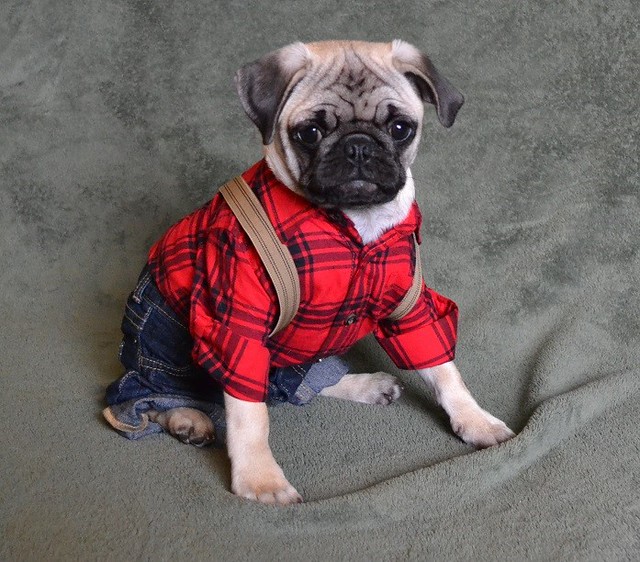
- gorro
- pantalones
- camisa
- calcetines
- Selecciona todas las prendas de ropa que aparecen en el imagen (Select all of the articles of clothing that appear in the image).

- gorros
- trajes de baño
- vestidos
- bolsos
- Selecciona todas las prendas de ropa que aparecen en el imagen (Select all of the articles of clothing that appear in the image).
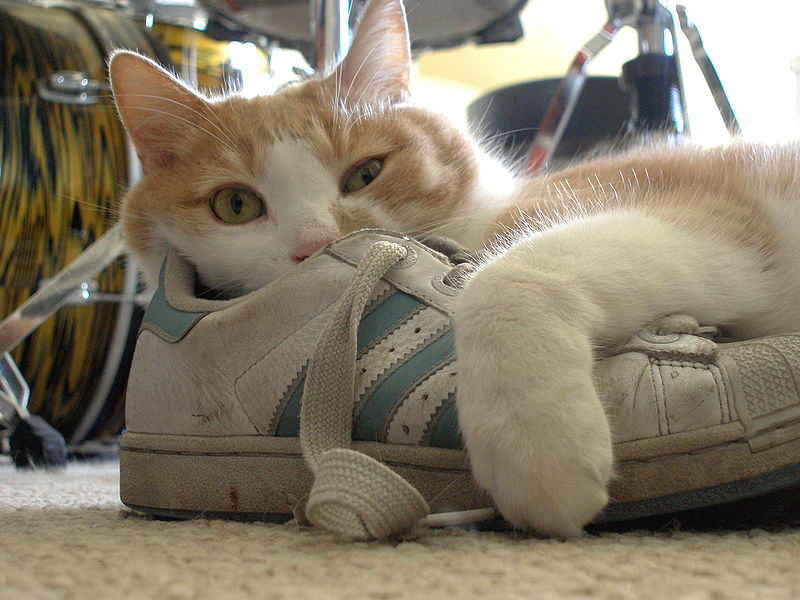
- tenis
- gorro
- botas
- bolso
- Selecciona todas las prendas de ropa que aparecen en el imagen (Select all of the articles of clothing that appear in the image).
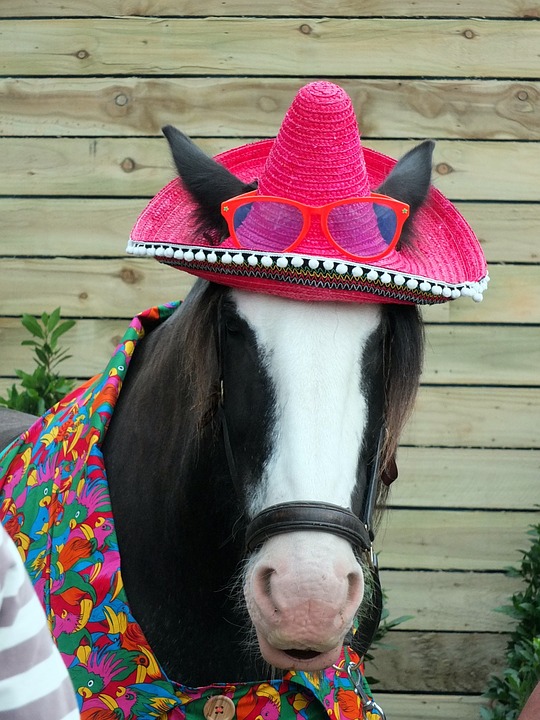
- sombrero
- paraguas
- camisa
- lentes
- Selecciona todas las prendas de ropa que aparecen en el imagen (Select all of the articles of clothing that appear in the image).
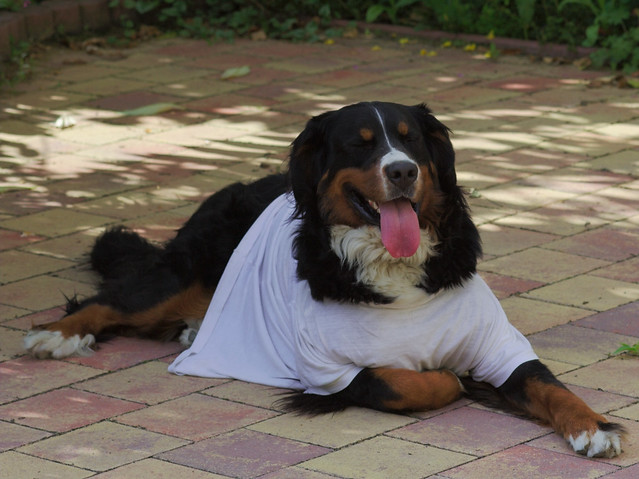
- gorro
- zapatos
- camiseta
- pantalones
- Selecciona todas las prendas de ropa que aparecen en el imagen (Select all of the articles of clothing that appear in the image).

- lentes
- vestido
- bufanda
- gorro
B. La ropa
- Which picture corresponds to the speaker’s description?
- Which picture corresponds to the speaker’s description?
- Which picture corresponds to the speaker’s description?
- Which picture corresponds to the speaker’s description?
- Which picture corresponds to the speaker’s description?
- Which picture corresponds to the speaker’s description?
- Which picture corresponds to the speaker’s description?
Contributors and Attributions
- Chihuahua. Authored by: mintanddog. Located at: https://pixabay.com/pt/photos/c%C3%A3o-chihuahua-um-boneca-tee-copa-3408673/. License: Other. License Terms: Pixabay license (https://pixabay.com/pt/service/license/)
- Boo The Brawny Lumberjack Pug. Authored by: DaPuglet Pugs. Located at: https://www.flickr.com/photos/dapuglet/30450554441. License: CC BY-SA: Attribution-ShareAlike
- all day I dream about shoes. Authored by: liz bustamante. Located at: http://all%20day%20I%20dream%20about%20shoes. License: CC BY: Attribution
- Horse. Authored by: fotshot. Located at: https://pixabay.com/pt/photos/cavalo-disfar%C3%A7ado-cabe%C3%A7a-pesados-426721/. License: Other. License Terms: Pixabay license (https://pixabay.com/pt/service/license/)
- Dog in tshirt. Authored by: stanze. Located at: https://www.flickr.com/photos/stanzebla/27818822404. License: CC BY-SA: Attribution-ShareAlike
- Biker dog. Authored by: Larry Grubbs. Located at: https://commons.wikimedia.org/wiki/File:Dog_at_Myrtle_Beach_Bike_Week_Doggles_and_Harley-Davidson_cap.jpg. License: CC BY: Attribution
- The birthday cake. Located at: https://commons.wikimedia.org/wiki/File:The_birthday_cake.jpg. License: Public Domain: No Known Copyright
- Ejercicios: La ropa. Authored by: SUNY Oneonta with Lumen Learning. Provided by: SUNY Oneonta. License: CC BY: Attribution
- Ejercicios: La ropa. Authored by: Lumen Learning with Freedom Learning Group. License: CC BY: Attribution
- Mens Slim Fit Designer Casual Trench Coat. Authored by: FLATSEVEN. Provided by: Flickr. Located at: https://www.flickr.com/photos/flatseven/35451357861. License: CC BY-SA: Attribution-ShareAlike
- Botas de Trabajo. Authored by: pen_ash. Provided by: Pixabay. Located at: https://pixabay.com/es/photos/botas-de-trabajo-botas-los-zapatos-4133817/. License: Other. License Terms: Pixabay License
- Bufanda India Colores. Authored by: janin_amandine. Provided by: Pixabay. Located at: https://pixabay.com/es/photos/bufanda-india-colores-colorido-1442583/. License: Other. License Terms: Pixabay License
- Pies Calcetines. Authored by: tookapic. Provided by: Pixabay. Located at: https://pixabay.com/es/photos/pies-calcetines-persona-piso-933087/. License: Other. License Terms: Pixabay License
- En Blanco Camisetas. Authored by: nattyjeff. Provided by: Pixabay. Located at: https://pixabay.com/es/illustrations/en-blanco-camisetas-blanco-1976334/. License: Other. License Terms: Pixabay License
- chaqueta. Authored by: StockSnap. Provided by: Pixabay. Located at: https://pixabay.com/es/photos/azul-mezclilla-chaqueta-2566082/. License: Other. License Terms: Pixabay License
- Falda Moda. Authored by: Engin_Akyurt. Provided by: Pixabay. Located at: https://pixabay.com/es/photos/falda-moda-pierna-ni%C3%B1a-mujer-sexy-3897351/. License: Other. License Terms: Pixabay License
- Gorro de Ochos. Authored by: Merche Lazaro. Provided by: Flickr. Located at: https://www.flickr.com/photos/deunvistazo/5502617442/. License: CC BY: Attribution
- Guantes El Dedo. Authored by: Engin_Akyurt. Provided by: Pixabay. Located at: https://pixabay.com/es/photos/guantes-el-dedo-letras-msn-2685978/. License: Other. License Terms: Pixabay License
- Niu00f1o Niu00f1a. Authored by: mintchipdesigns. Provided by: Pixabay. Located at: https://pixabay.com/es/photos/ni%C3%B1o-ni%C3%B1a-la-lluvia-puddle-504321/. License: Other. License Terms: Pixabay License
- lentes. Authored by: yankara. Provided by: Flickr. Located at: https://www.flickr.com/photos/yankara/473075608/. License: CC BY: Attribution
- Jeans Pantalones. Authored by: Tama66. Provided by: Pixabay. Located at: https://pixabay.com/es/photos/jeans-pantalones-estilo-hombre-4050815/. License: Other. License Terms: Pixabay License
- Men's Shorts - Old Bull Lee. Authored by: OldBullLeeWasHere. Provided by: Wikimedia Commons. Located at: https://commons.wikimedia.org/wiki/File:Men%27s_Shorts_-_Old_Bull_Lee.jpg. License: CC BY-SA: Attribution-ShareAlike
- Child K's Christmas pajamas. Authored by: Fresh On The Net. Provided by: Flickr. Located at: https://www.flickr.com/photos/feelingmyage/6574066213. License: CC BY: Attribution
- Sombrero. Authored by: Gellinger. Provided by: Pixabay. Located at: https://pixabay.com/es/photos/sombrero-sombrero-de-paja-headwear-2519955/. License: Other. License Terms: Pixabay License
- Suu00e9ter Gris. Authored by: Engin_Akyurt. Provided by: Pixabay. Located at: https://pixabay.com/es/photos/su%C3%A9ter-gris-hombre-invierno-fr%C3%ADo-3737417/. License: Other. License Terms: Pixabay License
- Siblings?. Authored by: Chris Hunkeler. Provided by: Flickr. Located at: https://www.flickr.com/photos/chrishunkeler/42040859702. License: CC BY-SA: Attribution-ShareAlike
- Evening Dresses. Authored by: Leopold Terence. Provided by: Flickr. Located at: https://www.flickr.com/photos/98794605@N03/13159956955/. License: CC BY-SA: Attribution-ShareAlike
- Zapatos Negros. Authored by: xaytham. Provided by: Pixabay. Located at: https://pixabay.com/es/photos/zapatos-negros-zapatos-de-cuero-2752226/. License: Other. License Terms: Pixabay License
- Cap. Authored by: Marcelo. Located at: https://pixnio.com/objects/shoes-and-clothing/white-sports-cap-hat#. License: CC0: No Rights Reserved
- Bolso. Located at: https://pxhere.com/es/photo/673931. License: CC0: No Rights Reserved
- Silk Hawaiian shirt, Hawaiian Surf on label, HSTR 17416.. Provided by: National Parks Service. Located at: https://www.nps.gov/hstr/learn/historyculture/the-casual-sport-shirt.htm. License: Public Domain: No Known Copyright
- Calle Caminando Paraguas Persona. Authored by: Nayara Sabino. Provided by: Pexels. Located at: https://www.pexels.com/es-es/foto/calle-caminando-paraguas-persona-1844746/. License: Public Domain: No Known Copyright
- Zapatos. Located at: https://pxhere.com/es/photo/1207081. License: CC0: No Rights Reserved
- Man Wearing Suit Jacket. Authored by: Walid Riachy. Located at: https://www.pexels.com/photo/man-wearing-suit-jacket-dress-shirt-and-dress-pants-standing-near-wall-1450114/. License: Public Domain: No Known Copyright
- Vocabulario: La ropa. Authored by: SUNY Oneonta with Lumen Learning. Provided by: SUNY Oneonta. License: CC BY: Attribution



